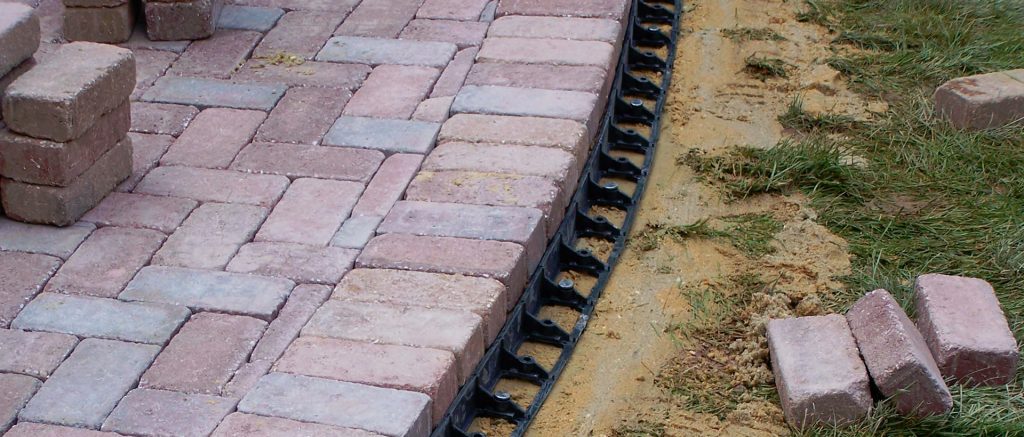One of the most common questions we get from homeowners when doing a paver job in Victoria BC is how are the pavers going to remain stationary. Since this is such a common landscaping question, I thought it’s worth putting it up here.
Edge Restraints

At Triton Landscaping, we use these plastic edge restraints to keep pavers from shifting sideways. The system utilizes a combination of a semi flexible thick plastic that holds the pavers in place, and 8-10″ steel spikes that hold the plastic restraints themselves in place. This system is advantageous in that it is flexible and can be used for both straight and curved sections while being pleasing visually. The edge restraints can be left in the open or buried under sod or other landscaping materials hiding them completely. They are very durable and unlike concrete edges, will not crack or look dirty over time.
Bracing
In addition to edge restraints, the paver bricks themselves are packed close together so that they brace each other from moving in any horizontal direction. It is said that their lateral movement is restrained. This along with joint sand, which stiffens with moisture, means the individual parts join together to act as a single large unit rather than as individual constituents. This is only applicable of course when the bricks are surrounded on all four sides by an existing structure, other pavers, or an edge restraint.
Mortar
Sometimes, mortar will be needed in these landscaping projects. Type S or even thin set can be used for areas like stairs where it’s not possible to have something on all 4 sides bracing a brick and it’s not possible to install edge restraints on the lip of the stairs. In this instance, mortar can be used. The installation of the pavers will be slightly different. No sand will be used under them as normally is the case as mortar will not set with particulates contaminating the mix. The pavers themselves should be as large as possible to maximize the surface area of contact with its underlying surface, sometimes necessitating the use of larger pieces than anywhere else on the pattern. A common tactic is to use capstones or “double standards” with similar colors and tones. Additionally, adhesives can also be used with similar principles as the application of mortar.
Vertical Movement
So far we’ve only talked about what prevents lateral movement, that is the side to side shift of pavers. For vertical shift, it really comes down to proper base prep. We will be talking about this in the next article.
If you have any questions about this topic, have a project in mind, or anything else, please contact us.